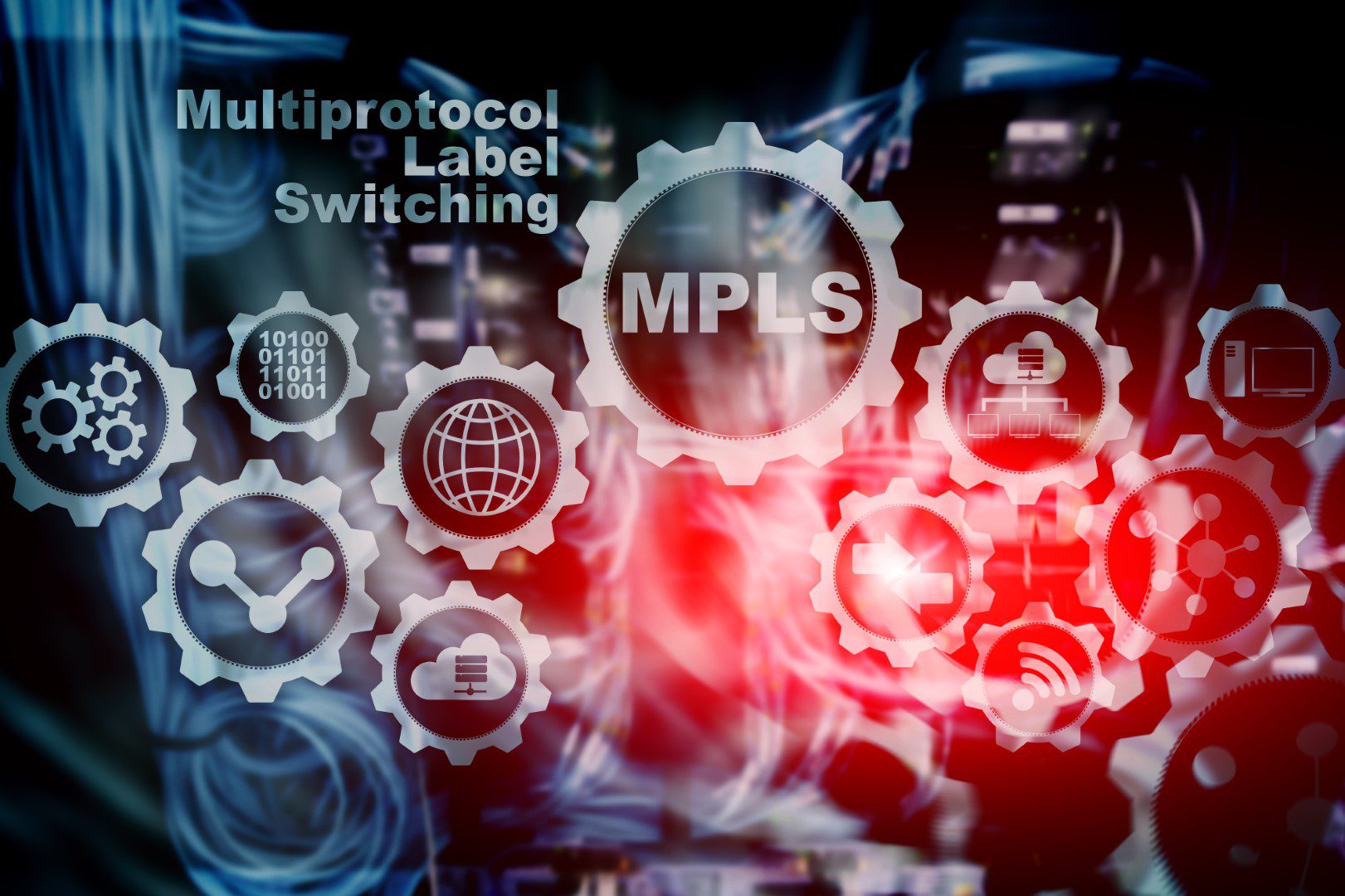Multiprotocol Label Switching (MPLS), a sophisticated technology designed to enhance your business’s network traffic flow. MPLS, a standout alternative to traditional IP routing since the turn of the century, streamlines the way internet routers process IP packets.

In a nutshell, MPLS is a technology that is used to speed up and improve the outlook of your network traffic flow. It has been around since the turn of the century, and many people see it as the number one alternative to typical IP routing.
To explain multiprotocol label switching in more detail, we need to look at how IP routing works online. Essentially, internet routers receive units called IP packets, which then deliver information to a specific IP address. This packet can move between multiple routers before it finally reaches its destination.
The problem, however, is that there is absolutely no framework or instructions for how IP packets get to the desired IP address. Every time it gets delivered to a new router, the router has to try and figure out where it needs to go. It uses complicated routing tables to help come to a decision, and this happens every time until the destination is reached. As a result, this entire process can be incredibly slow and damage the performance of various applications.
This is where MPLS comes into play as it transforms this process. Instead of packets having no routes, and everything being determined as it goes along, there will now be pre-determined routes. As such, packets can go from A to B a lot faster than ever before. This speeds up communications in your business, making it easier for your customers to connect to you!
Multiprotocol label switching revolved around something called FEC (forwarding equivalence class) types. This is basically a label that is given to every IP packet that enters the network. Every packet gets given an FEC label that means it is part of a specific group based on the characteristics of the packet.
As well as FEC types, MPLS depends on the routers in a network having special tables that tell them what to do when particular FEC packets come through. As a result, the routers see the label on a packet, relate it to the table, and know what to do with it right away.
The whole idea of MPLS is that it allows you to transfer data throughout the network routers with more efficiency and security than ever before. Before, every router would need to carry out header analysis to figure out where to send the packet to. This would happen time and time again until you finally got the packet where it needed to go. It felt very much like a start-stop process. It can be likened to driving somewhere without knowing where you’re going. Every now and then, you stop and ask for directions, then carry on as far as you can. MPLS is like driving a car with satnav; you have a pre-programmed route that is easy to follow. As a result, you reach your destination in less time with fewer complications.
An MPLS network is incredibly effective at dealing with IP packets that are very similar to one another or have some of the same qualities. Thanks to this genius labelling system, the same type of packets get handled similarly all the time. There is far more consistency, which further promotes more efficiency and better data processing speeds.
The best example of this is with real-time data traffic. With packets that carry this, it is vital they find their destination right away. Things like video calling or using VoIP will result in real-time traffic being transferred throughout a network.
So, what happens when you don’t have MPLS in place? You deal with that annoying stop-start routing system, which can lead to laggy calls and buffering. Needless to say, this is irritating for everyone involved. But, with MPLS, the routers use labels to figure out that there’s a lot of real-time traffic being delivered through these packets. So, it’s easy to direct it all to low-latency routes in the network, leading to clearer calls and less lag.
Perhaps the biggest difference between MPLS and regular packet routing is that the labels give each packet more information. As such, the routers have more info to cling to and use to come up with quick decisions.

So, if you would like to significantly improve network communications in your business, please get in touch with us today to inquire about MPLS. We will provide you with more details about our service and how we will help your company.

If you are looking for a business network technique that is well worth the money, then MPLS is undoubtedly for you. You will see some genuinely fantastic benefits that prove this is a smart investment:
Gain insights from our latest blog posts. These articles are packed with expert tips and updates in telecommunications to help you stay ahead.
For general enquiries, please contact us using the details below, or fill out the enquiry form.










We specialise in enhancing business connectivity with cutting-edge technology and personalised services, ensuring your business stays connected.
Company No: 04952400
Are you looking for a new website? Contact Outrank Today
